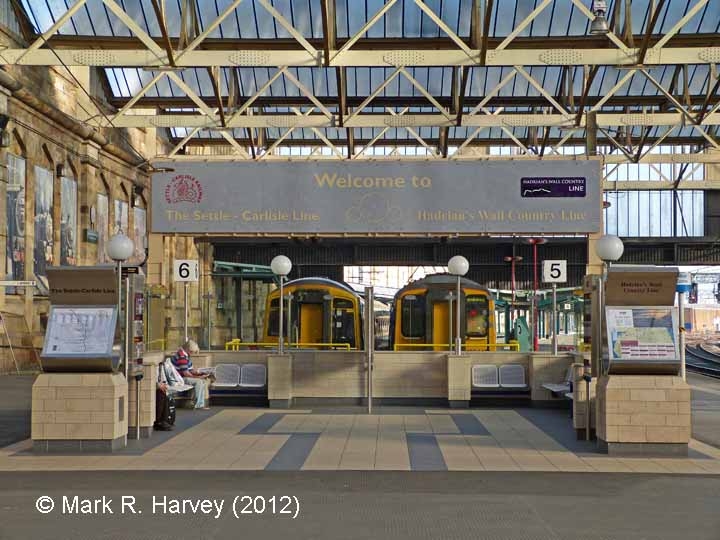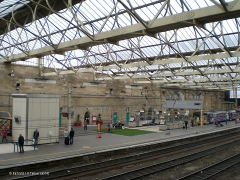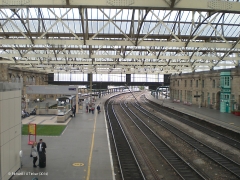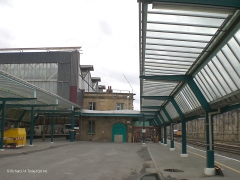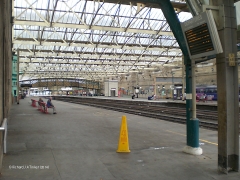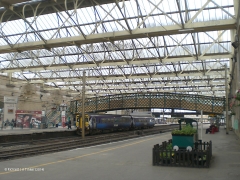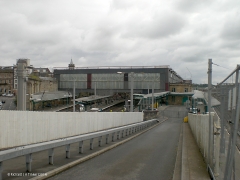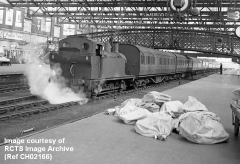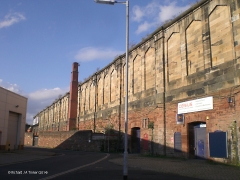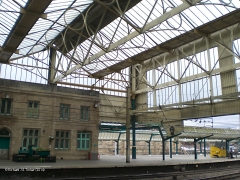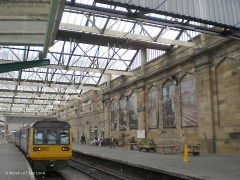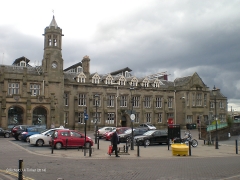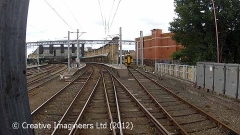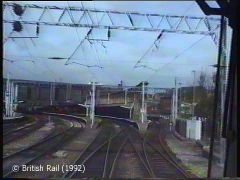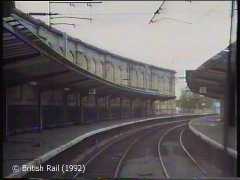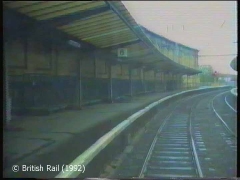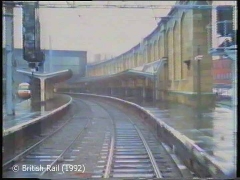The main building at Carlisle Citadel* Station was designed by Sir William Tite and its design reflects the aspirations and architectural styles of the two companies that commissioned it (the Lancaster & Carlisle Railway and the Caledonian Railway). It is 300 feet long, forty feet high (the central clock tower is twenty feet higher) and it was constructed between 1846 and 1851. Key design cues include gothic-arches above some of the most important windows & doors and linen fold doors. The initial facilities included a booking hall, refreshment room, waiting rooms, toilet facilities and offices.
Since 1851, the station's track layouts, platform arrangements and ancillary buildings have been altered several times to reflect changes in traffic levels. However, the external appearance of the main station building has remained relatively unchanged.
When the Midland Railway Company began to operate passenger services along the Settle & Carlisle route in 1876, it became the seventh company to use the station at Carlisle.
In October 1878, work began on a project to significantly enlarge the station. The expanded station site was levelled by creating an undercroft (rather than infilling) and this subterranean area was used for a variety of purposes including a butchery (to service the refreshment rooms), a foot warmer store and staff facilities. Changes to the passenger facilities included the construction of a large two-storey building on an island platform, a new footbridge to connect the island platform with the main platform and the addition of an impressive train shed roof. The footbridge opened for public use on 4th July 1880 and work on the train shed roof (said to cover an area of approximately 7 acres) was finished the following year. The second floor of the island building provided office accommodation, while the ground floor included waiting rooms, a parcels post office, a second booking office, a luggage room, toilet facilities and refreshment rooms. The opening of the latter on 20th July 1881 marked the completion of the works to extend the station.
Over the decades, the train shed roof has suffered from a combination of neglect, Second World War bomb damage, unsympathetic modifications and partial demolition. The gothic end-screens of the train shed and the roof spanning platform 1 & adjacent sidings were removed in 1957. In place of the latter, a simple cantilevered canopy was installed to provide passengers with some shelter from the elements. The roof spanning platforms 3 & 4 was shortened and new (simplified) glazed end screens were added to let in light, while keeping out the worst of the weather. Fortunately, the section of roof adjacent to the main station building (spanning the central part of platforms 3 & 4) was retained and it was sympathetically repaired between 2015 and 2017.

